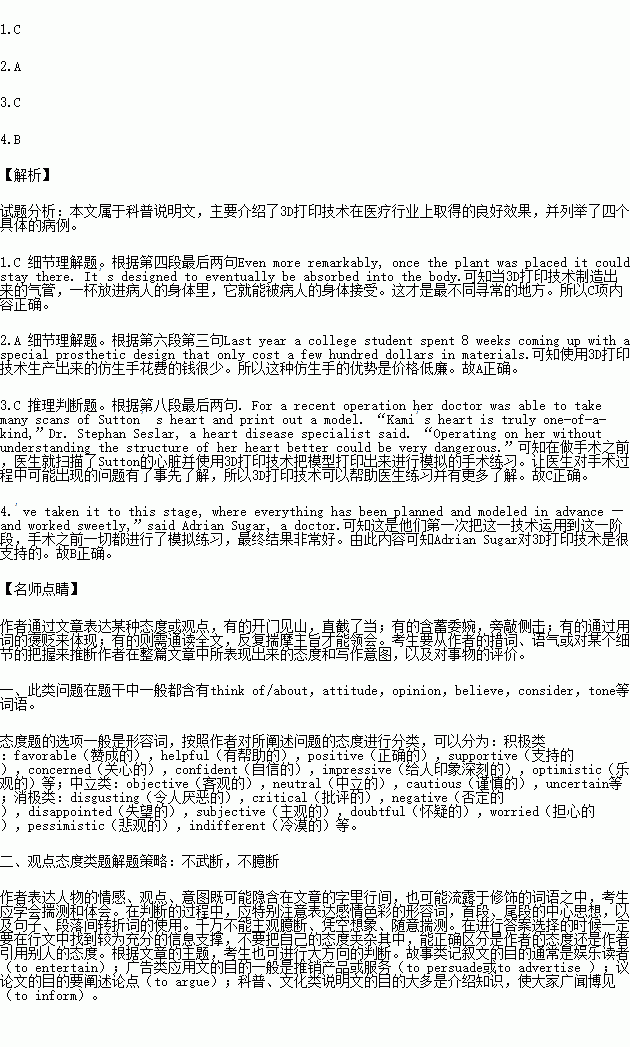题目内容
Quicker and faster 3-D printers have allowed not just amazing objects to be created, but have started to affect how doctors treat patients.
We’ve put together a list of some of the most amazing medical breakthroughs made possible with 3-D printing.
Life-Saving Airway
In 2013, doctors created a new airway for kaiba Gionfriddo, a boy born with an airway that kept collapsing (萎陷). To save his life doctors printed tiny tubes to join together in different shapes and sizes until one finally worked for Kaiba. It was placed in Kaiba’s bronchus (支气管) so that it no longer collapsed. Even more remarkably, once the plant was placed it could stay there. It’s designed to eventually be absorbed into the body.
New “Bionic” Hands
One of the most remarkable ways 3-D printing is now being used is as a way to create prosthetics (假肢). A boy born without an arm named Alex was able to get a new“bionic”hand thanks to it. Last year a college student spent 8 weeks coming up with a special prosthetic design that only cost a few hundred dollars in materials. He said he wanted to create a prosthetic far cheaper than other choices that can run tens of thousands of dollars.
A practice Heart
In Seattle, doctors have been able to use 3-D printing technology to“practice”risky operations so that they will face fewer surprises in the operating room. Kami Sutton was born with her heart“in the wrong place”. For a recent operation her doctor was able to take many scans of Sutton’ s heart and print out a model. “Kami’s heart is truly one-of-a-kind,”Dr. Stephan Seslar, a heart disease specialist said. “Operating on her without understanding the structure of her heart better could be very dangerous.”
A New Skull
A U.K. man was able to have part of his skull rebuilt thanks to a 3-D printer. Stephen Power broke his cheek bones in a crash. To help Power his doctors instead created 3-D bones all carefully printed in the shape of his face. “This is really the first time we’ve taken it to this stage, where everything has been planned and modeled in advance — and worked sweetly,”said Adrian Sugar, a doctor.
1.What is special about the 3-D printed airway?
A.It uses high-tech materials.
B.It varies in shapes and sizes.
C.It can be absorbed by the body.
D.It can prevent any disease in the airway.
2.What is the advantage of the new“bionic”hand?
A.Its price. B.Its effects.
C.Its materials. D.Its shape design.
3.How can 3-D printing technology help doctors in the operating room?
A.It helps them get better scans.
B.It guarantees the success of operations.
C.It enables them to practice and learn more.
D.It helps them to deal with patents, anxiety.
4.What does Adrian Sugar think of the new skull printed by 3-D technology?
A.He has doubts about it.
B.He thinks highly of it.
C.It needs to be better planned.
D.It functions well but needs improving.

